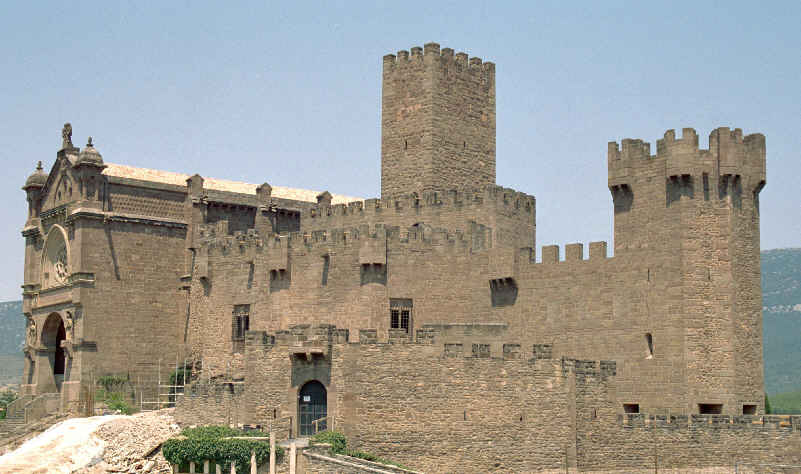St. Francis Xavier was a Navarrese-Basque Roman Catholic missionary born in the Kingdom of Navarre on April 7, 1506. His father was a privy counsellor and finance minister to King John III of Navarre. He was the youngest in his family and resided in a castle which still partially stands today and is in the possession of the Jesuit order.
Francis grew up, surrounded by war, as Navarrese was the target of King Ferdinand of Aragon and Castile. When the war stopped and Francis came of age, he was sent to study at the University of Paris. While there, he roomed with his friend, Peter Favre. The pair met and were heavily influenced by Ignatius of Loyola, who encouraged Francis to become a priest.

Castle of the Xavier family
On August 15, 1534, Francis Xavier along with Peter Favre, and several other friends, made vows of poverty, chastity, and obedience. They planned to travel to the Holy Land to convert non-believers. Francis started his study of theology that same year and was ordained on June 24, 1537.
Pope Paul III approved the formation of their order in 1540, which became The Society of Jesus. The order is more popularly became known as the Jesuits.
During that time, Portugal was colonizing India and the Portuguese settlers in India and elsewhere were losing their faith and Christian values. Hence, the King of Portugal asked the Pope to send missionaries to the region to restore their faith.
At the insistence of Pope Paul III, Ignatius decided to send Francis to India. Thus, in 1541, on his 35th birthday, Francis left for India as the Papal Nuncio to the East. He arrived in Goa on May 6, 1542.
Although Goa had churches and even a bishop in the Portuguese colony, there were few people to preach and minister to the Portuguese, especially outside the walls of the city.
Francis soon realized that many sailors and settlers were former prisoners who had been recruited from Portuguese jails or, were fleeing due to crimes they made back home. None of them came to spread Christianity or live virtuous lives. They came to escape Portuguese authorities, find adventure, or to make fortunes.
Francis ministered first to the sick and the children of Goa. Then he learned about the native people of the Pearl Fishery Coast, who had been baptized a decade earlier, but were never taught their faith. He began ministering to them and spent three years among them. He was often embarrassed by the conduct of his Portuguese countrymen who were already Catholic, but frequently misbehaved.
Francis built 40 churches for the people of the Pearl Fishery Coast. He encountered difficulty in his mission because he usually worked to convert the people first, instead of their leaders.
He eventually decided to travel to Malacca and the Maluku Islands to evangelize the people there. He spent about two years in the region, and while in Malacca, a Japanese man named Anjiro caught up with him. Francis converted him to Christianity, making him the first Japanese convert.
In 1549, Francis departed for Japan and arrived there in July of that year. The local daimyo warmly received Francis, but forbade his subjects from converting to Christianity. In addition to the legal obstacle, Francis found the local language to be a barrier.
Some traditionalists, including priests from the native religions, grew hostile toward Francis and Christianity. He established a few congregations, but the religion was suppressed from spreading by the nobility. Eventually, Christianity became the subject of great persecution, forcing many to go underground with their belief.
Francis departed for China in April 1552 and reached the country in August, stopping at an island off the Chinese coast.
He managed to find a man to take him to China, but while he was waiting for his boat to arrive, Francis became ill with a fever. He died on December 3, 1552.
Francis was buried on the island until February 1553, after which his body was removed and taken to Malacca. Then, one of Xavier’s companions moved his body to his own residence for the rest of the year. In December that year, his body was moved to Goa. The remains of Francis are buried in a silver casket, enclosed in a glass case.
 Casket containing the relics of St. Francis Xavier
Casket containing the relics of St. Francis Xavier
Francis Xavier was beatified by Pope Paul V on Oct. 25, 1619, and canonized by Pope Gregory XV on March 12, 1622, at the same ceremony as Ignatius of Loyola.
Other Saints of the Day
1. Saint Abbo
2. Saint Agricola
3. Saint Birinus
4. Saint Eloque
5. Saint Lucius